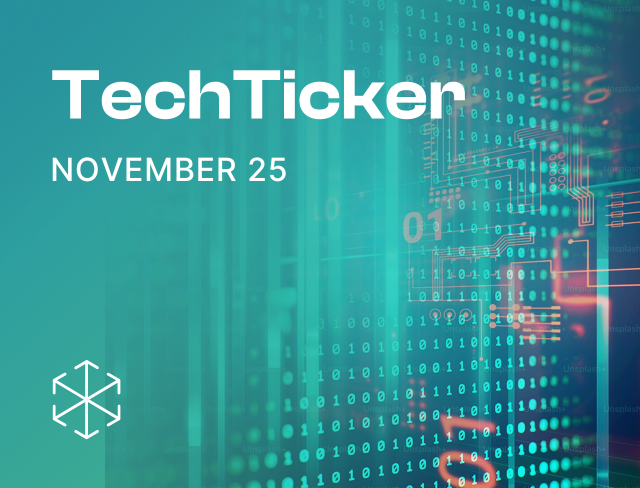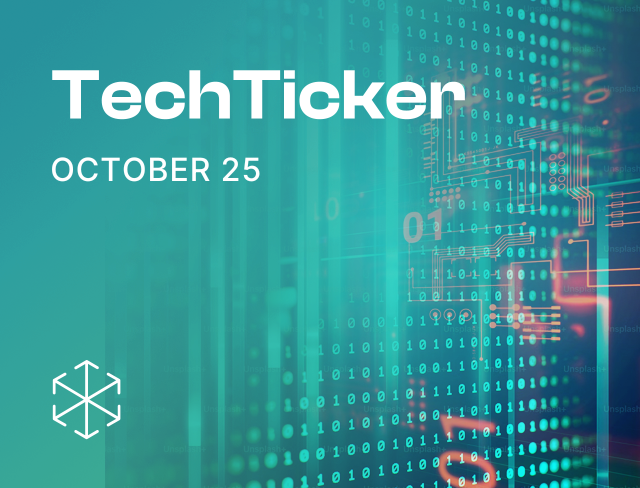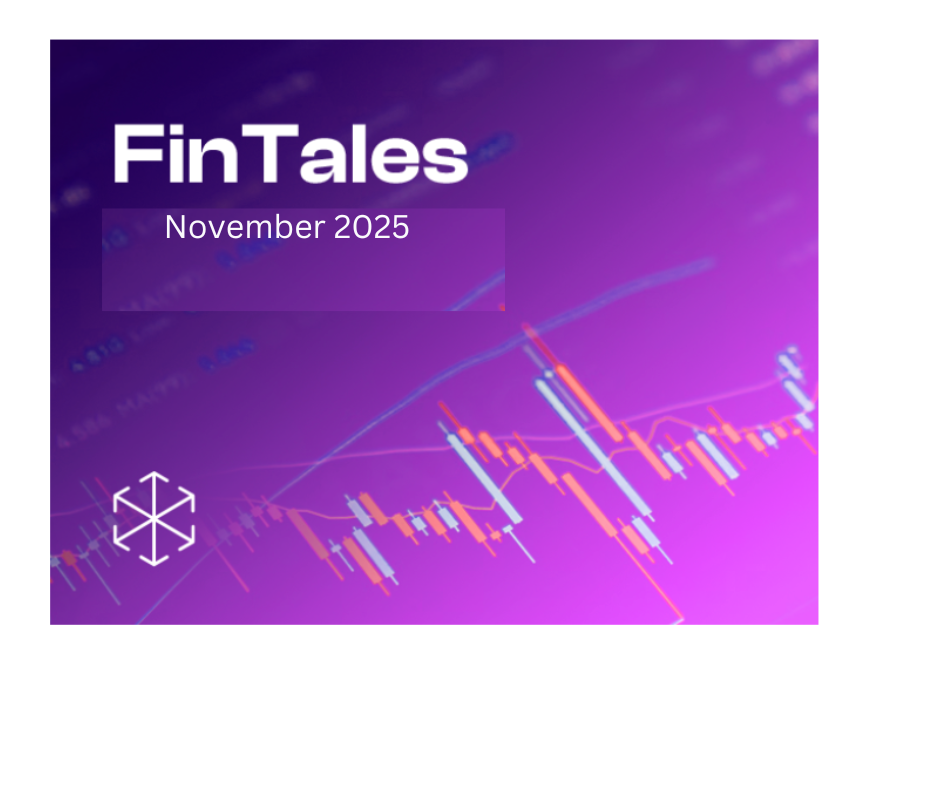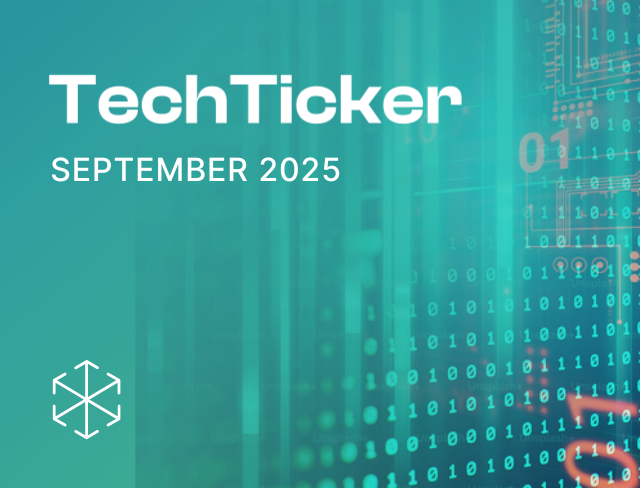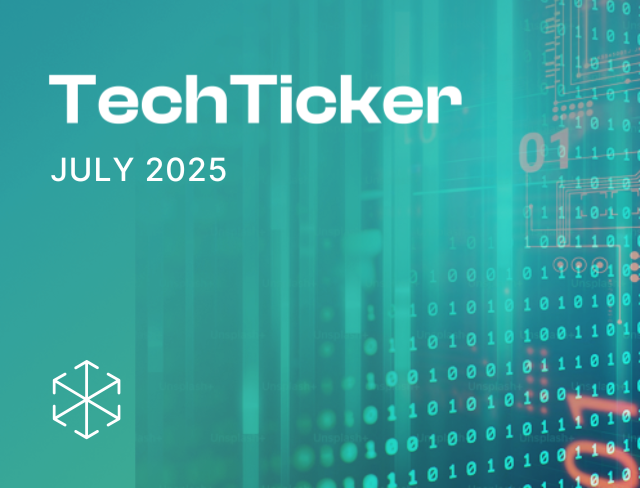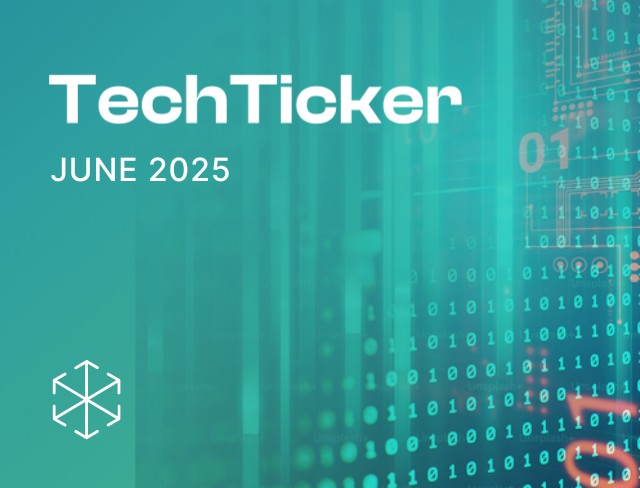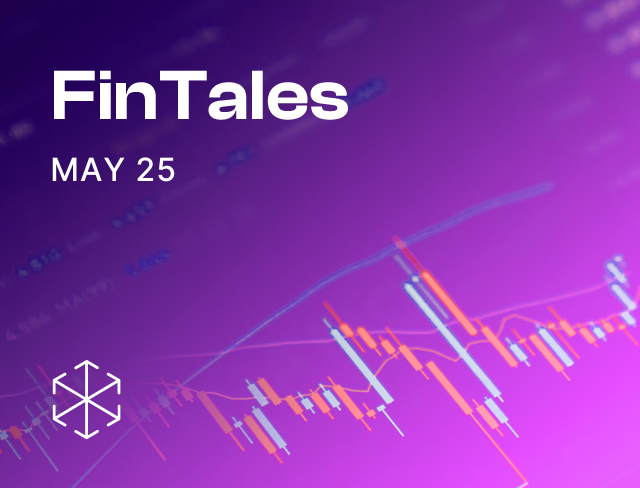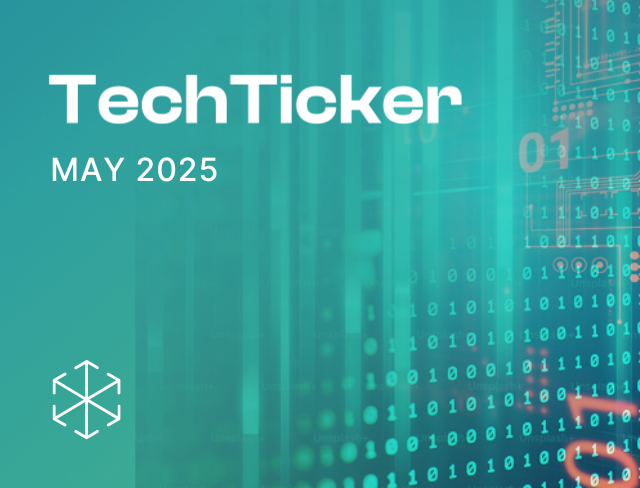We usually show up with wisecracks and wordplay, but the past few weeks haven’t quite felt punchline territory. Even as the dust seems to settle from the recent conflict between India and Pakistan, we’d like to take a moment to think of the victims; and salute the Indian Armed Forces for their valour and sacrifice.
Through all this, the policy mill did not pause. So, we bring you this month’s Ticker — a flurry of advisories, takedown sprees and a star-studded summit on content. It’s been a month of action — let’s dive right into it.
Deep-Dive
News-ance alert?
Much of this month’s policy churn was triggered by the fallouts after the Pahalgam terrorist attack and the Indian government’s counter military operation. Flooded with fake news relating to the conflict and details of India’s operations, the government doubled down with regulatory heat by issuing advisories and being on a takedown spree.
Government and its fact-checking unit springs to action: Reportedly, the Indian government has, on average, blocked 1000+ pieces of misinformation from social media per day, since the attacks. Press Information Bureau’s Fact Check Unit (the government’s fake news verification arm) has been on overdrive, debunking false claims about Indian military assets under attack, disruption of civilian services, pilots captured, video games clips used as real war footage and even a viral advisory asking people to stock up. The government also blocked dozens of YouTube channels for spreading fake news and communally sensitive content.
SCIT enters (with a red pen): In the wake of the Pahalgam attacks, the parliament’s specialized committee on IT (SCIT) sent a memo to the Ministry of Information and Broadcasting (MIB) and the Ministry of Electronics and Information Technology (MeitY) to provide details of action they have taken against social media platforms (and social media influencers) hosting content “against national interest”. On May 7, 2025, the SCIT had a meeting with MIB and MeitY officials to review the ‘mechanism to curb fake news’.
MIB has reportedly informed SCIT that the safe harbour provisions under the Information Technology Act 2000 (immunity granted to platforms for third party content), may be revisited. While MIB is not in favour of bringing a new law for fake news without broader consultation, it suggested that PIB’s FCU should be formally recognised under the IT Rules 2021, to help strengthen the fight against misinformation.
Here’s the catch: FCU was first introduced in the law in the 2023 amendment to the IT Rules, 2021. However, this amendment was struck down by the Bombay High Court for being unconstitutional (read more in our edition here). Spoiler: MeitY is in the process of filing a special leave petition against this Bombay High Court judgement.
Advisory mode — On!: A few days after the Pahalgam attack, on April 26, 2025, MIB rolled out an advisory asking media channels to refrain from showing any live coverage, visuals, or source-based reporting of India’s defence operations or movement of security forces.
Soon after, as the tensions escalated, MIB published another advisory for all OTT platforms, media streaming platforms and intermediaries to immediately take down any content of Pakistan origin including web-series, films, songs, podcasts and other streaming media content, in the interest of national security. MIB reminded platforms of their duties under the IT Rules 2021 — including Rule 3(1)(b) (due diligence requirement on intermediaries to take reasonable efforts to moderate its content) and the Code of Ethics (online content publishers’ duty to exercise caution in hosting any content that may affect India’s sovereignty, security, public order.) So far, compliance seems to be erratic as major streaming platforms and intermediaries continue to host such material.
Censorship without cause?: The Internet Freedom Foundation has pushed back on the MIB advisory, arguing that it lacks a clear “statutory footing”. They also say that the blanket, origin-based ban fails the legal tests of necessity and proportionality laid down by the Supreme Court’s landmark decisions in Shreya Singhal and Anuradha Bhasin.
Takedowns tsunami: Early May saw a rise in the take down orders. Over 8000 accounts on X were blocked in response to government requests. Meta took down a major religious Instagram page. News platforms were also caught in the mix: 4PM News, a popular YouTube news channel was blocked on the grounds of “national security” and “public order” (update: the latest is that the government has now withdrawn this order); and the website of digital news publication ‘The Wire’ was briefly taken down as well. The lack of transparency on which piece of content has triggered the blocking, and the trend of blocking the entire platform as opposed to the specific question, has received backlash – with some calling it an attack on press freedom.
Connecting the dots
Lights, Camera and WAVES
India’s inaugural World Audio Visual and Entertainment Summit (WAVES 2025), held in Mumbai, was not just an opportunity to fangirl over Shah Rukh Khan — it showcased India’s creative talent and growing position as a content creation hub for the global entertainment industry.
Source: Created by Vidushi, after reading this
During the sidelines of the summit, PM Modi oversaw a closed-door meeting with global tech and media leaders including Adobe CEO Shantanu Narayen, YouTube CEO Neal Mohan, Instagram head Adam Mosseri, and Reliance Industries Chairman Mukesh Ambani. The discussion centred on AI’s transformative impact on content creation and the accompanying challenges, particularly the threat of AI related copyright infringement. PM Modi emphasized the need to balance copyright protection with fostering creativity and innovation. Union IT Minister Ashwini Vaishnaw also underlined the need for a stronger IP regime and clear guardrails for ethical AI.
Some key budgetary announcements at the summit included: announcement of a USD 1 billion fund to support India’s content creators, sanctioning of INR 391 crore for a new Indian Institute of Creative Technology — aimed at fostering expertise in creative and digital tech — in partnership with leading tech companies including Google, Apple, Microsoft, Star India, Meta, and Adobe and NVIDIA, INR 1300 crore worth of B2B deals at the WAVES Bazaar. The state of Maharashtra, home to the Bollywood glitz and glamour, signed MoUs worth INR 8,000 crore to turbocharge the state’s media infrastructure.
Desi GPT incoming
It won’t be a Ticker edition without a splash of the IndiaAI Mission. This mission has been focused on driving responsible and inclusive growth of India’s AI ecosystem — including building domestic capacity to build AI models in the country. Recently, IT Minister Ashwini Vaishnaw announced that Sarvam AI was selected as the first startup to develop India’s indigenous foundational AI model. Sarvam aims to build models that can address India-specific challenges across key sectors such as healthcare, education, agriculture, climate and governance.
Whose line is it anyway?
Amidst AI-related cases on the rise in India — including news agency ANI’s challenge against Open AI’s Chat GPT and the Federation of Indian Publishers’ lawsuit against OpenAI, the government has now ‘entered the chat’.
The Department for Promotion of Industry and Internal Trade (DPIIT) has created a multi-stakeholder committee to study emerging issues at the intersection of AI and copyright law. The committee will assess whether the Indian copyright law is adequate to handle rise of AI and recommend reforms. While the DPIIT panel is not likely to weigh in on the specific disputes, it will publish a working paper on the broader legal and policy issues around the potential impact of AI on te existing copyright framework. This marks the first formal move by the government towards addressing concerns around copyright and AI.
This committee is chaired by Himani Pande (Additional Secretary, DPIIT). Members include officials from the IT Ministry, the industry association NASSCOM, and prominent IP legal professionals and academicians. In a plot twist though, a member of the committee has requested removal, citing a lack of AI expertise and prior consultation.
From the courtrooms to your inbox
· Level up on GST levy on gaming : India’s real-money gaming companies are locked in a Supreme Court showdown over tax. Until 2023, they were paying 18% GST on their platform fees — i.e. the fee users pay for playing the games). Then came the twist: a flat 28% GST on all user deposits — and here’s the kicker — applied retroactively from 2017. The Directorate General of GST Intelligence (DGGI) issued notices to 71 online gaming companies, asking them to pay up over INR 1.12 lakh crores — leading to a sleuth of challenges. The verdict is pending. Stakes are high.
· Wikipedia 1 – ANI 0 : Remember ANI’s INR 2 crore defamation suit against Wikipedia? We’ve covered this case in detail in our deep dive here. During the proceedings, the Delhi High Court had ordered Wikipedia to take down its page documenting the defamation lawsuit. Wikipedia challenged this order in the Supreme Court. On 9 May, 2025, the Supreme Court quashed the Delhi High Court order and allowed Wikipedia to keep the page running, as it didn’t find the order ‘necessary and “proportionate”. The apex court said that it is not the judiciary’s duty to tell media to delete or take down content. And courts must remain open to public scrutiny, debate and criticism even on matters that are sub judice. The main defamation case is still ongoing.
· 4PM’s block challenged: Journalist Sanjay Sharma had taken the government to the Supreme Court, over blocking of his YouTube channel, 4PM News — having 7.3 million subscribers. The channel was blocked on April 29 under a secret government order citing national security and public order– in response to some videos critical of the government in the aftermath of the Pahalgam attack. His argument: this move violates Section 69A of the IT Act (the government’s blocking power), which requires a reasoned order and a chance to be heard before blocking; vague invocations of national security don’t cancel out constitutional rights — especially not the right to free speech and due process. He also challenged the Blocking Rules themselves (Rules 8, 9, and 16), calling them a constitutional black hole. On May 13, 2025 the government withdrew the blocking order. But the challenge to the Blocking Rules remains live. The Supreme Court has ordered to club the case with the petition filed by Software Freedom Law Centre (which also challenges the Blocking rules).
· Digital access is a fundamental right: SC declares: A plea was filed in the Supreme Court asking for inclusive alternatives to digital know-your-customer (KYC) for persons with disabilities. The petitioners argued that the current KYC process involves procedures such as taking a selfie, signing with pen & paper, clicking photos etc. which are inaccessible to persons with disabilities and therefore violative of provisions under the Rights of Persons with Disabilities Act, 2016 and the Constitution. The Supreme Court ruled that right to digital access is part of the fundamental right under Article 21. And the state has an obligation to provide an inclusive digital ecosystem to those who are marginalized, disabled, and historically-excluded. It directed government websites, digital payment platforms, e-KYC systems, and e-governance services to be accessible to persons with disabilities. It issued over 20 directions to all respondent ministries (including the IT Ministry) and its regulated entities (including social media platforms) to follow accessibility standards. These include inclusive design practices, sign language support integration, accessibility audits, nodal officers and grievance redressal for digital access, among others.
Reading Reccos
· In an insightful article on Mint, Soumya Gupta traces the journey of how advertising of D2C brands on Instagram no longer guarantees any success.
· Vox offers a detailed breakdown ranking of which gen-AI tool is better suited for which task.
· Skype has shutdown, and Rest of World has a fun read on the many ways in which this old tool changed people’s lives.
Shoutouts!
· Braving the Bengaluru traffic, 85+ in-house counsels attended our BLR-edition DPDP Workshop. Between bites of the now-legendary mango mousse, they navigated breach simulations, negotiated tricky data protection contracts, tackled data discovery exercises, and dissected UI/UX flows to spot privacy gaps. Keep a lookout as we take the workshop to another city next!
Source: In-house photographers (with questionable skills)
See you next month!
Signing off, the Ticker team for this edition: Pallavi Vidushi Nirmal

